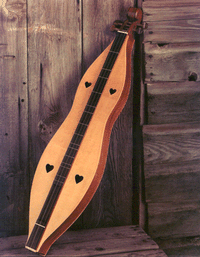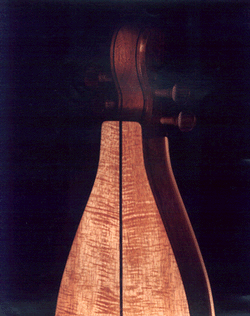
APPALACHIAN DULCIMER
 | The word dulcimer is believed to have originated centuries ago. It was derived, it is thought, from the greek word "dulce" (which means sweet) and the latin word "melos" (which means song). The Appalachian Dulcimer is not to be confused with its biblical counterpart, the hammered dulcimer, rather in its current incarnation, it is believed to have evolved from a northern European instrument, the German, "scheitholt" which like the Appalachian Dulcimer is played with a bow and plucked or strummed as well. The instrument is found in many European cultures, Sweden, Holland, in various forms. In each of these countries the instrument took on local characteristics . It is believed that this "scheitholt" made it to Appalachia toward the end of the 18th century, and once again it evolved and was modified to suit the needs of the local players. |
| It is commonly thought that the Appalachian dulcimer was widely used throughout the mountains and hollows of the Appalachian area. But, technically the experts believe that in its heyday and prior to its recent reintroduction to folk music, there were perhaps as few as 1,000 dulcimers throughout the whole region. There are as many shapes and styles of dulcimers as there are players and mountain craftsmen. Except for adhering to a few basic conventions, the builder was free to explore options and possibilities in the creation of the dulcimer. |

|
 | The dulcimer you see here is a bit more refined than the traditional, rustic mountain dulcimer. It is hourglass shaped and features a spruce top and Acacia koa back and sides. It uses the traditional friction peg tuning system and small beads on each string near the end of the fingerboard are used as a "fine tuning " device. Most mountain dulcimers are made completely of indigenous hardwoods (i.e., walnut, pecan, maple, etc.) and the workmanship is primitive, to say the least. It is a delightful instrument which is often strummed or plucked as an accompaniment to the human voice. In recent years it has evolved into a solo instrument. Sometimes being finger picked, or bowed. I loved building Appalachian dulcimers... because they are a joy to own and very easy to learn to play... it is the perfect first instrument for a novice musician. |
